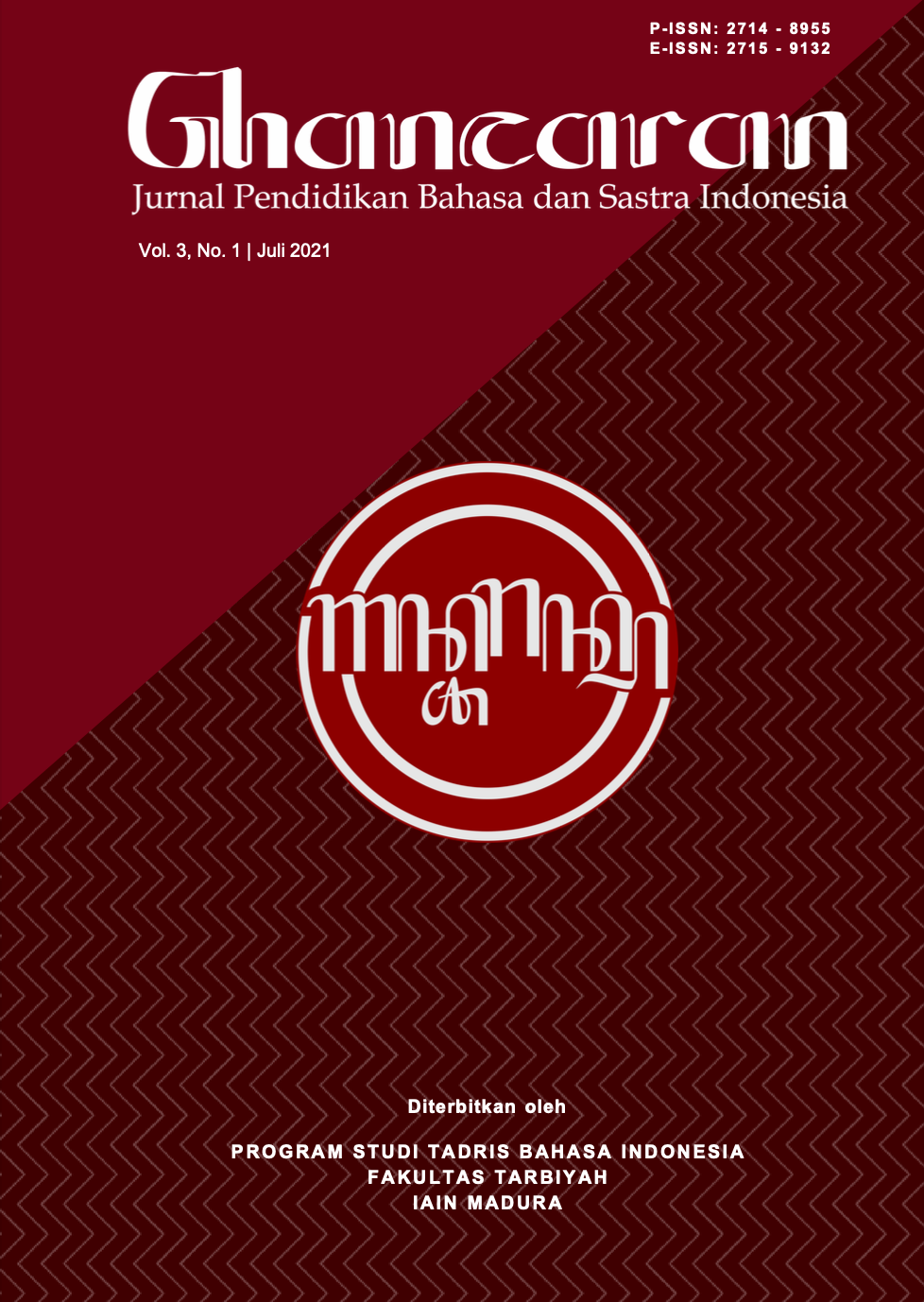Analisis Kesalahan Berbahasa Bidang Morfologi dalam Laporan Isu Hoaks Corona Virus oleh KOMINFO
 Abstract views: 820
,
Abstract views: 820
,
 PDF downloads: 855
PDF downloads: 855
Abstract
This research aims to describe the language errors in the field of morphology, especially in the affixation process and its justification in the Issue Hoax Corona Virus Report by KOMINFO. The benefit of research is to provide insight and knowledge for readers on the use of good and correct Indonesian in the context of writing. Affixation errors cannot be ignored, because at first glance the error is not visible, but it is very important considering that many readers are interested in explaining the reasons why the corona virus or covid-19 hoax issues. This approach uses descriptive qualitative research methods with data collection techniques refer to, record and take samples. The method used to analyze the data is the aggregate method. The results of this study indicate that there are still many language errors even repeatedly in the report on the issue of corona virus hoaks by KOMINFO. Errors in this study include 8 prefix errors, 0 infix errors, 18 suffix errors and 12 confix errors.This research aims to describe the language errors in the field of morphology, especially in the affixation process and its justification in the Issue Hoax Corona Virus Report by KOMINFO. This approach uses descriptive qualitative research methods with data collection techniques refer to, record and take samples. The method used to analyze the data is the aggregate method. The results of this study indicate that there are still many language errors even repeatedly in the report on the issue of corona virus hoaks by KOMINFO. Errors in this study include 8 prefix errors, 0 infix errors, 18 suffix errors and 12 confix errors.
Downloads
References
Astuti, E. P. 2012. Analisis Afiksasi dan Penghilangan Bunyi pada Lirik Lagu Geisha dalam Album Meraih Bintang. Universitas Muhammadiyah Surakarta.
Bachri, B. S. 2010. Meyakinkan Validitas Data melalui Trianggulasi pada Penelitian Kualitatif. Jurnal Teknologi Pendidikan, 10(1), 46–62.
Chaer, A. 2012. Linguistik Umum (Edisi Baru). Jakarta: Rineka Cipta.
Johan, G. M. 2018. Analisis Kesalahan Berbahasa Indonesia Dalam Proses Diskusi Siswa Sekolah Dasar. Jurnal Pendidikan Bahasa Dan Sastra Indonesia, 18(1), 136–149.
Maesaroh, Siti. 2016. Analisis Kesalahan Bidang Morfologi pada Karangan Deskriptif Siswa SMA. Universitas Muhammadiyah Surakarta.
Malik, A. R., & Fatimah, S. 2017. Analisis Kesalahan Morfologi dalam Karangan Sederhana Bahasa Jerman Siswa Kelas XI SMAN 2 Makassar. Eralingua, 1(1).
Nurwicaksono, B. D., & Amalia, D. 2018. Analisis Kesalahan Berbahasa Indonesia pada Teks Ilmiah Mahasiswa. AKSIS Jurnal Pendidikan Bahasa Dan Sastra Indonesia, 2(2), 138–153.
Permatasari, Nanda Putri. 2013. Abreviasi, Afiksasi, dan Reduplikasi Ragam Bahasa Remaja dalam Media Sosial Facebook. Jurnal Sastra Indonesia. FIB UNDIP.
Pinem, D., & Lubis, F. 2017. Analisis Kesalahan Berbahasa dalam Tataran Morfologi pada Teks Deskripsi Siswa Kelas VII SMP Negeri 40 Medan Tahun Pembelajaran 2016/2017. Kode:Jurnal Bahasa, 1–14.
Priyono, Y. 2012. Analisis Kesalahan Berbahasa Bidang Morfologi pada Mading di Unversitas Muhammadiyah Surakarta. Universitas Muhammadiyah Surakarta.
Sintia, M., Sudiana, I. N., & Nurjaya, I. G. 2019. Analisis Kesalahan Morfologi pada Tuturan Siswa SMP N 3 Banjar. Jurnal Pendidikan Bahasa Dan Sastra Indonesia UNDIKSHA, 9(2), 204–215.
Strazny, P. 2005. Encyclopedia of Linguistic Volume 1. NewYork: Fitzroy Dearborn.
Sudaryanto. 1993. Metode dan Aneka Teknik Analisis Bahasa. Yogyakarta: Duta Wacana University Press.
Verawati, F., & Mulyadi. 2019. Tindak Tutur Masyarakat di Desa Lawangan Daya Kecamatan Pademawu Kabupaten Pamekasan. GHANCARAN, 1(1), 41–51.
Yuliana. (2020). Corona Virus Diseases (Covid-19); Sebuah Tinjauan Literatur. Wellness And Healthy Magazine, 2(1), 187–192.
Ghancaran: Jurnal Pendidikan Bahasa dan Sastra Indonesia uses an Open Access Policy under the Creative Commons Attribution-ShareAlike 4.0 International License. Authors publishing in this journal agree to the following terms:
- Ghancaran Journal holds the copyright and grants the journal rights for first publication with the work simultaneously licensed under a

The work is distributed under Creative Commons Attribution-ShareAlike 4.0 International License which allows others to share, copy, and redistribute the material in any media or format and adapt, remix, change, and develop the material even for commercial purposes, as long as it is stated credit and license derivative works under similar terms. - Authors may make additional contractual arrangements for non-exclusive distribution of the journal's published work version.
- Authors are permitted to post their work online (e.g., in institutional repositories or on their websites) before and during submission, as doing so may lead to productive exchange.



















